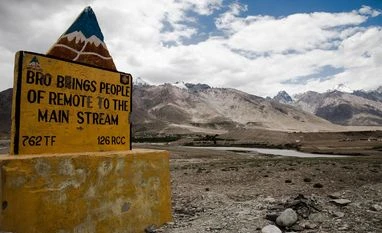Inspecting the ongoing construction work of an air dispatch unit of the BRO here, which is also touted to be the world's largest 3D concrete printed campus, Director General, Border Roads (BR), Lt General Rajeev Chaudhry Sunday said it was a major breakthrough in the building construction domain.
Lt Gen Chaudhry said the Border Roads Organisation (BRO) and construction company L&T joined hands to make the Himank Air Dispatch Unit in Chandigarh, which features state-of-the art 3D printing technology, a world class facility.
India is the frontrunner to adopt this technology, the DG said, adding that he was really delighted to witness the development.
Chaudhry said such a building complex will take nothing less than 18 months or two years to complete through conventional construction methods.
But 60 per cent of the construction work on the air dispatch unit, which began in April, is already done and will be finished by the end of December, he said. It is a major breakthrough in the building construction domain, the DG said.
It fills all of us with a sense of pride to say this is going to be the world's largest 3D complex, he added.
Also Read
The campus, covering 1.98 acre, hosts various facilities, including accommodation for officers, junior commission officers and other ranks. It also contains an administrative building and storage facilities, he said.
The DG further said around 300 BRO projects worth Rs 8,000 crore were completed during the last few years, and added that the Centre has increased the budget for BRO projects for the current financial year.
BRO's Himank air dispatch unit facility at Chandigarh resonates with the true essence of Atmanirbhar Bharat, demonstrating our nation's ability in the field of 3D concrete printing technology and setting a global benchmark, Chaudhry said.
The upcoming facility in Chandigarh hosts six building blocks. Five of the six building blocks are constructed using 3D printing technology and one block makes use of precast technology.
The 3D printing technology along with solar studies and building simulations is used to create a climate-sensitive built form. The 3D printable concrete was completely developed, tailor-made to suit Chandigarh's climatic conditions, said BRO officials.
Once completed, the facility will act as a transit detachment for the BRO responsible for the movement of men and material to Ladakh region.
(Only the headline and picture of this report may have been reworked by the Business Standard staff; the rest of the content is auto-generated from a syndicated feed.)



)